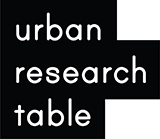Architectural Acupunctures in Songyang County, Lishui City, China (Part I)
Our essay, Adaptive Reuse of Peri-Urban Villages: Rural Revitalization in Xiananshan Village, Zhejiang, introduced the practice of adaptive reusing the entire old village in Lishui City, China. Do similar stories happen to other places? The investigation into villages in Songyang – another county of Lishui City – can provide a new vision of reviving the withering villages.
Songyang County, established during the Eastern Han Dynasty (199 A.D.), is the oldest district in Lishui. It has 158 Chinese Traditional Villages[1], ranking first in East China and third in the country. On the other hand, many rural communities in Songyang are in danger of vanishing. To reverse this situation, the local government invites architects and scholars to engage in protecting, reusing and developing the villages in aspects of built environment, economy, society, and culture. Xu Tiantian, one of the chief consultants, designed a series of architectural projects as small-scale interventions to integrate local industries or other characteristics of the villages into tourism. She calls these projects “architectural
Architectural acupunctures started from Pingtian and Hengkeng mountain villages near the heart of Songyang in 2015 and spread to the county’s boundary in the north and south in 2017. One year later, small groups of villages were formed to have an agglomeration effect.


Architects tried to blend the projects with their environment by applying vernacular materials and traditional methods of constructing. Meanwhile, they brought the urban lifestyle to villages, introducing buildings with new functions in four categories: hospitality, cultural and public, commercial, and industrial. Moreover, in the rural context, the inserted building is more flexible than a pavilion, a museum, or a factory, and can be adapted into a venue temporarily for a big event, for instance, a wedding ceremony, or a traditional opera performance.

Although architectural acupunctures have only been implemented since four years ago, we can already find some clues about their positive economic and cultural effects. First, buildings designed by famous architects attract visitors, thus stimulating more refurbishment in the village and creating new jobs. Villagers can work on renovation projects or as overseers of exhibition rooms. Second, architectural acupunctures of factories, workshops, pavilions, and museums are showcases for craftsmanship, folk customs, and traditional art that clearly evoke the villagers’ cultural identity.


Songyang story offers an extraordinary glimpse of new rural revitalization practices for villages endangered amid rapid urbanization. Not only is the architectural acupuncture strategy a cost-efficient and effective way to develop tourism and help villages to survive, but it can also induce larger transformations and start a virtuous circle to reduce entrenched rural poverty.
[1] The list of Traditional Chinese Villages is published by national ministries of China in order to protect and develop traditional villages. The evaluation index system has three parts: historic building, village structure, and intangible cultural heritage. In 2018, Songyang had 158 villages on the list.
